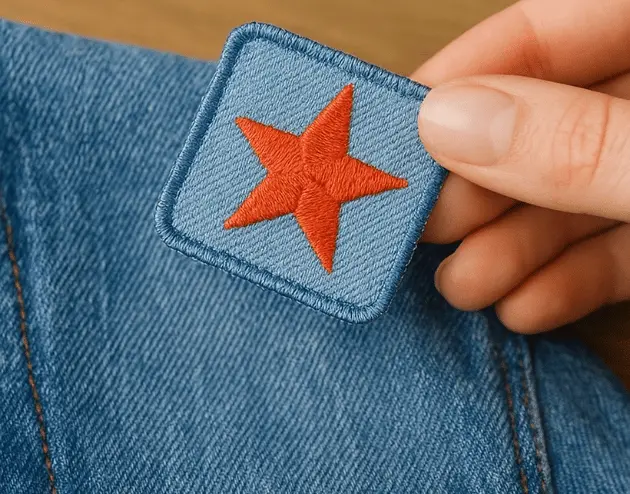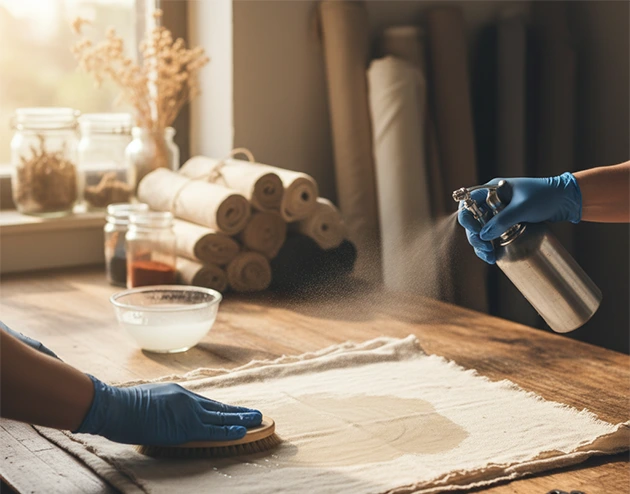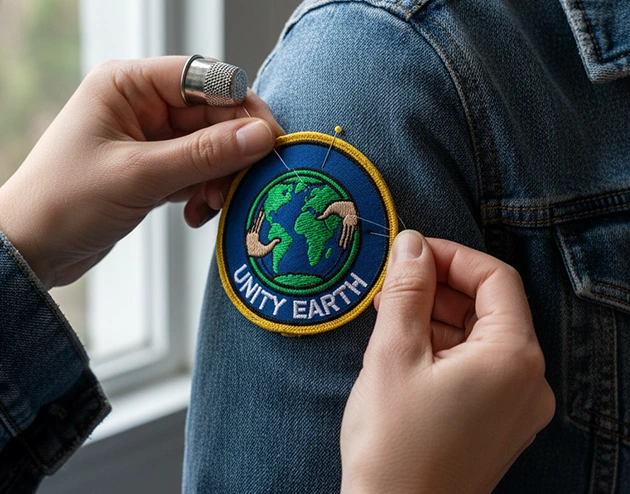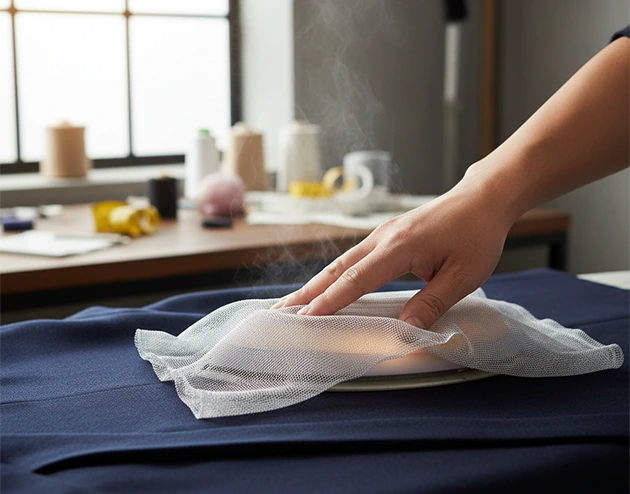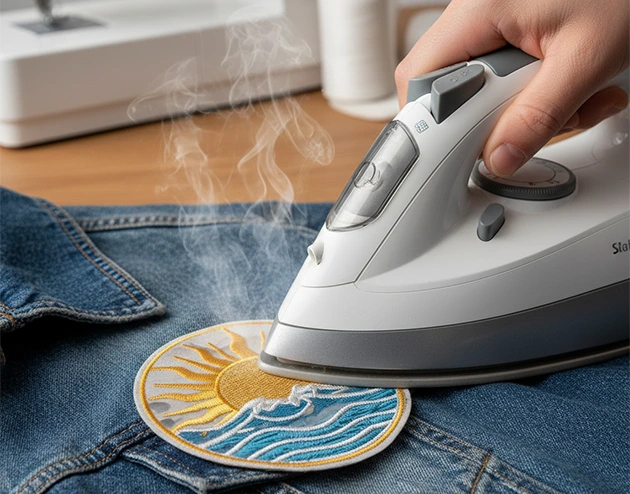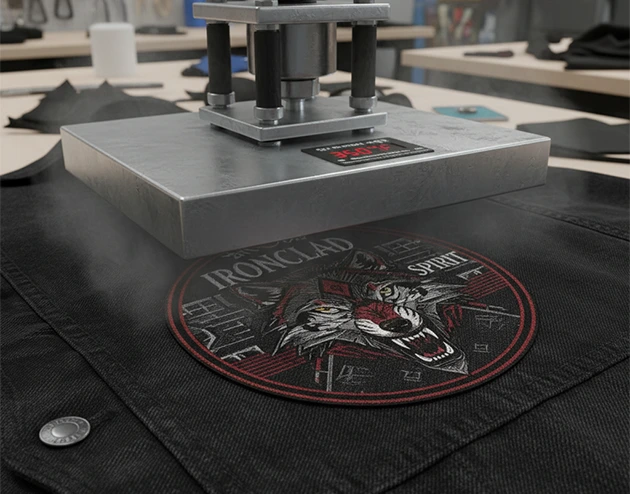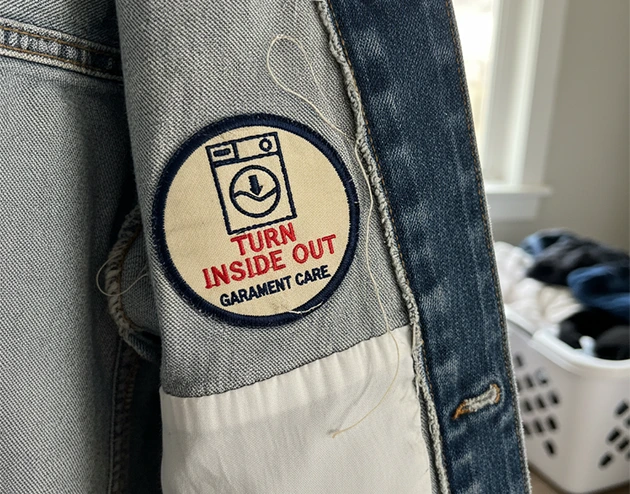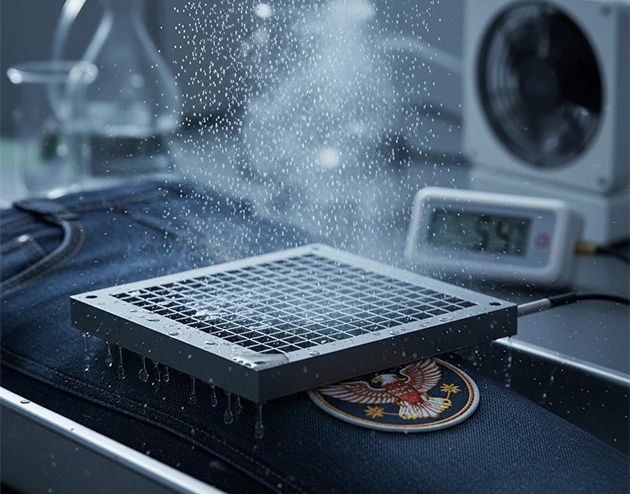The Problem with Large Iron-On Patches
Big patches look amazing, but they also come with big problems. One minute your jacket is perfect. Next, the corners are curling, the edges are lifting, and that statement patch is barely hanging on after a single wash.
Why? More surface area means more stress. Gravity, fabric stretch, and uneven heat all team up to make the adhesive fail.
Here’s how to stop it from happening:
1. Just a few quick stitches around the border can hold the patch in place better than heat alone.
2. Unlike a regular iron, it spreads heat evenly across the entire patch. No weak spots.
3. Press once, let it cool, then press again. It sounds simple, but this little trick locks the adhesive in tight.
Large iron-on patches can make a statement without peeling, if you treat them right. Follow these steps, and your patch will stay put as long as you want it to.
DIY Iron-On Patches (Fun or Frustration?)
Making DIY iron on patches sounds fun. You pick your design, cut it out, iron it on, and suddenly your sweatshirt or backpack is uniquely yours. It’s creative, personal, and satisfying, until the patch starts peeling after the first wash.
The Honest Truth:
DIY patches often use weaker adhesives. The result can be uneven, inconsistent, or short-lived. Some crafters love the trial-and-error process, but if your goal is patches that stay put without constant re-ironing, DIY can be frustrating.
A Simple Rule:
If you’re fine touching up your patch every week, go for it. But if you want patches that hold firm, last through washes, and keep their look, then relying on stronger methods or professionally made patches is the way to go.
DIY is fun, but durability pays off in the long run. Choose wisely based on how much effort you’re willing to invest.
Why Iron-On Patches Fail (Fun or Frustration?)
Ever watched a patch slowly curl or lift right before your eyes? That sinking feeling is almost always how the patch was applied or cared for. Most people blame the patch, but the real problem lies in the process.
Here’s why patches fail:
1. Wrong heat:Too high scorches the fabric, too low leaves the adhesive weak.
2. Wrong fabric:Thick sweatshirts or layered fabrics need more pressure and attention.
3. Washing mistakes:Hot water or rough cycles can lift edges instantly
How to prevent failure:
1. Match the heat to the fabric. Adjust for cotton, denim, or polyester.
2. Press firmly and evenly, giving thick layers extra time.
3. Let the patch cool completely before washing.
4. Reinforce edges with a few stitches if needed.
Follow these steps, and your patches stop peeling mid-day or after a wash. What used to be a daily headache becomes a patch that lasts.
Final Thought
Peeling patches frustrate everyone, but the fix is simple: use the right heat, press firmly, match the fabric, and reinforce edges when needed. Follow these steps, and your iron on patches can last for years and look great every time you wear them.
